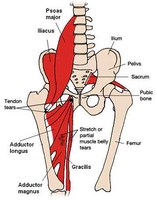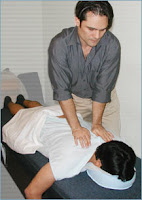 Quite a few people experience chronic tightness in the inner thighs, and some even end up straining the area, which is one type of “groin strain” you might have heard of (of experienced). The inner thighs occupied by a group of muscles called the adductors. Adduction, as a movement, is bringing a limb back to the body–or “adding” to the body–and thus the name.
Quite a few people experience chronic tightness in the inner thighs, and some even end up straining the area, which is one type of “groin strain” you might have heard of (of experienced). The inner thighs occupied by a group of muscles called the adductors. Adduction, as a movement, is bringing a limb back to the body–or “adding” to the body–and thus the name.
There are five adductor muscles: pectineus, adductor brevis (means short), adductor longus, adductor magnus and gracilis. Each one acts to bring the leg back toward the midline, among other specialized functions. We can split these five muscles into two groups–the short and long adductors. The first three named above make up the short adductor group, and these attach from the pelvis to the upper thigh, while the latter two make up the long adductors, which attach from the pelvis to the lower thigh and inner knee.
I’ve already showed you a great stretch for the short adductors–the frog stretch–and I hope you’ve been doing it. Now I want to show you a great stretch for the long adductor group. Watch the video below to see a great stretch for the long adductors, but please be careful as you do it, because if you strain this area, you may find it difficult to treat, and thus, hanging around for awhile. Once you start to open the inner thigh area, you’ll see how your hips and back thighs (hamstrings) respond by opening too. Enjoy the stretch.















